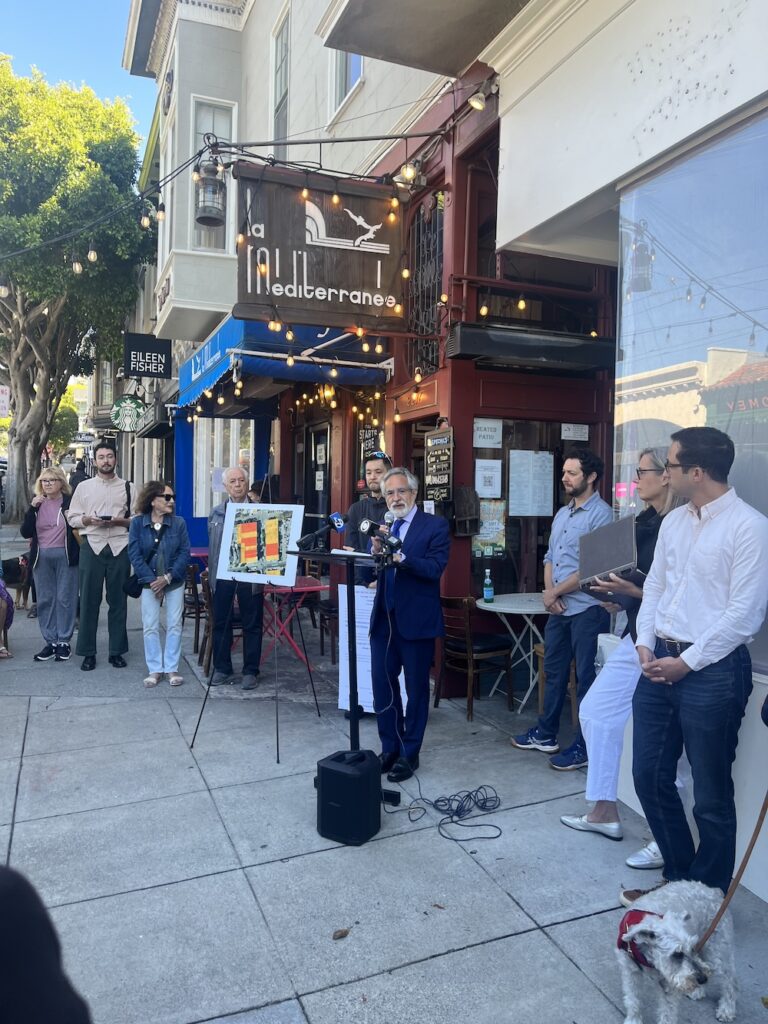The first signs of a potentially massive problem with Mayor London Breed’s plan to upzone commercial corridors for more housing emerged this week, as Laura Waxman at the Chron reported that
Earlier this year, stealthy entities spent upwards of $40 million on acquiring more than half a dozen aging buildings on Fillmore between Clay and Pine streets, including the defunct Clay Theater at 2261 Fillmore. For now, they’re adding to the street’s shuttered storefronts by displacing a handful of long-time small businesses in an apparent bid to ultimately bring more high-end retailers into the area.

This is one of the areas where Breed would like to see an eight-story height limit to allow more apartment buildings. It’s a “transit corridor.” That all sounds good in theory—but most of the buildings in those corridors are occupied by existing residential and commercial tenants.
Building new apartments means demolishing the existing structures—and while residential tenants under rent control have some rights, and may be able to return to the new buildings (though many will be displaced forever), commercial tenants have almost no rights at all.
So the upzoning could create massive displacement of legacy and neighborhood-serving businesses.
In the wake of the Upper Fillmore news, Sup. Aaron Peskin, who is running for mayor, announced today a creative plan that could change the whole upzoning debate: He is suggesting that any landlord who wants to displace a legacy or neighborhood anchor business, for any reason, should have to get a conditional use approval from the Planning Commission, which mandates a public hearing.
The conditional use process slows down any development activity. It adds expense to the developer, and can be appealed to the Board of Supes, which creates an opportunity for the community to bring the issue to citywide attention.
Developers hate CUs, as generally do the Yimbys, who see the process as delaying housing. But it’s hard to argue that the displacement of longtime community businesses is justified by the need to let speculators make huge profits buying up property before it is upzoned.
Which, it appears, is starting to happen.
Nick Ferris of Neighborhoods United SF:
“What is happening on Fillmore Street shows that Mayor Breed’s upzoning plan is already fueling real estate speculation and making small businesses vulnerable to displacement and demolition. We must ensure that a wave a displacement doesn’t destroy our neighborhoods.”
More from a Peskin press release:
“We support the need for more housing and especially affordable housing, but it does not need to come at the expense of small businesses,” said Justin Dolezal, President of Small Business Forward and owner of Bar Part Time. “We will not silently become a casualty of the upzoning plan.”
Among the advocates at the event was Bismar Jaffer, an attorney with Lawyers’ Committee for Civil Rights of San Francisco: “Many legacy businesses are owned by immigrants, or underrepresented groups who have historically faced barriers to economic opportunities. Protecting these businesses keeps these communities thriving and contributes to the city’s diversity. San Francisco has a responsibility to support policies that safeguard the rights of small business owners and ensure equitable development. We demand that investors respect the historical and cultural significance of these businesses and provide the support needed to keep them in our communities.”
Peskin:
“There is a right and wrong way to grow our city, and this is the wrong way.” said President Peskin. “We are here today with three generations of the Café La Mediterranée family. This family and this business are part of the cultural fabric of our city. They are being pushed out and not even getting a bus ticket.”
This is just one neighborhood commercial district, but it’s a canary in the coal mine. There will be more.
Potentially, if the supes can require a CU for the displacement of legacy businesses, they could add to the mayor’s upzoning plan a CU mandate for any displacement of any neighborhood-serving business.
For now, the Peskin proposal in an Interim Control plan, which would stay in place for 18 months. The district supervisor who represents the area, Catherine Stefani, told the Chron that she
is “collaborating closely” with the new property owners, city departments and Fillmore stakeholders to “ensure clear communication about the future of our cherished corridor.”
She’s also running for the state Assembly, and is not a cosponsor of Peskin’s proposal. Neither is Mayor London Breed:
“Conversations are continuing about the future uses of the sites,” said Jeff Cretan, Breed’s spokesperson.
I just love the passive voice. Who is having the conversations, and what are they saying? Breed’s Office isn’t telling us.
Full disclosure: Both of my kids are working on the Peskin for Mayor campaign.



